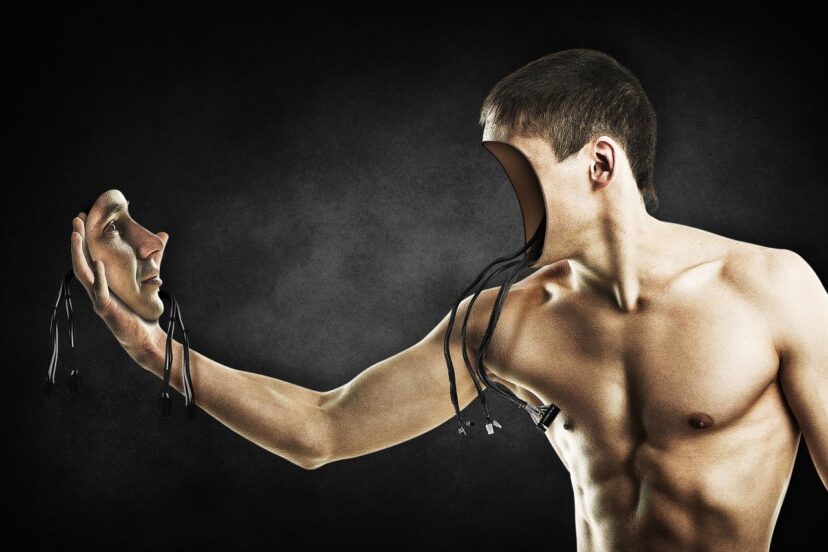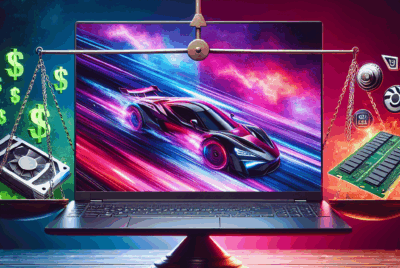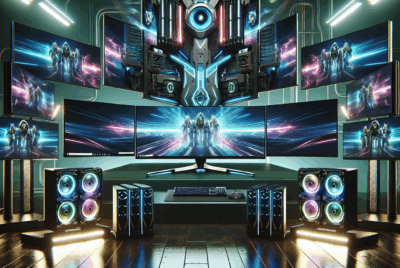How Do I Upgrade The Graphics Card In My Gaming PC?
If you’re an avid gamer like us, you know that a top-notch graphics card is the beating heart of any gaming PC. It’s the key to unlocking stunning visuals and immersive gameplay experiences. But what if your current graphics card no longer meets your gaming needs? Fear not, because in this article, we’ll guide you through the process of upgrading your graphics card in your gaming PC. From selecting the right card to installing it seamlessly, we’ll ensure that you’re well-equipped to take your gaming setup to new heights. So, let’s jump right in and explore the world of graphics card upgrades!
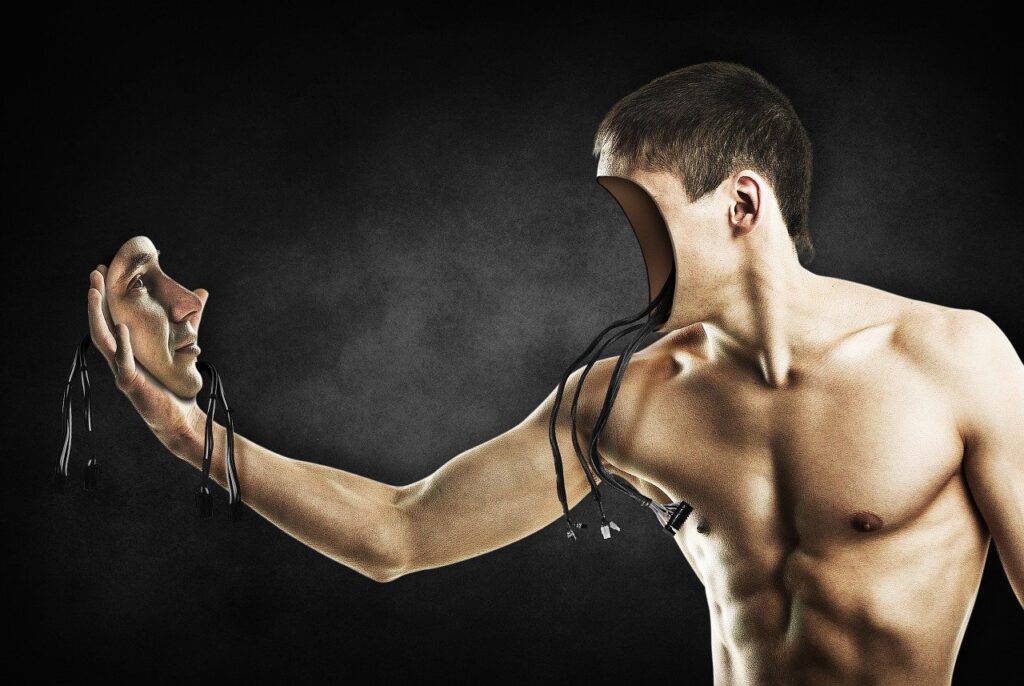
Checking Compatibility
Verify PCIe Slot Compatibility
Before upgrading your graphics card, it is crucial to ensure that your computer’s PCIe slot is compatible with the new graphics card you plan to install. PCIe (Peripheral Component Interconnect Express) is the interface that connects the graphics card to the motherboard. Check your motherboard’s documentation or consult the manufacturer’s website to determine the type of PCIe slot available and compare it to the specifications of the graphics card you want to purchase. This step is essential to avoid compatibility issues and ensure proper functionality.
Check Power Supply Capability
Upgrading your graphics card may require more power than your current power supply can provide. Graphics cards typically need additional power connectors from the power supply unit (PSU) to operate properly. Before purchasing a new graphics card, it is essential to check the power supply’s wattage and the number of available power connectors. Websites like PCPartPicker or the specifications of your power supply can help determine if it has sufficient wattage and power connectors for the upgrade. Ensuring that your power supply can handle the increased power demand is crucial to avoid stability issues and potential damage to your components.
Consider Physical Space
Graphics cards come in various sizes, so it is essential to consider the physical dimensions of your gaming PC’s case. Measure the available space inside your case to determine the maximum length and width a graphics card can be while leaving enough room for proper airflow and clearance. Consider any obstacles such as cables or hard drive cages that may obstruct the installation of a larger graphics card. Additionally, check the thickness of the card and make sure it does not interfere with other components on your motherboard. Considering physical space is crucial to ensure a hassle-free installation process and prevent any potential issues down the line.
Researching Graphics Cards
Determine Your Needs and Budget
Before diving into the vast world of graphics cards, it is important to determine your needs and set a realistic budget. Consider the types of games or applications you plan to use and the level of graphics performance you desire. A budget-friendly option may be sufficient for casual gamers, while enthusiasts may opt for high-end cards with advanced features and superior performance. By understanding your needs and setting a budget, you can narrow down your options and make an informed decision when researching graphics cards.
Compare Graphics Card Models
With a plethora of options available, researching and comparing graphics card models is essential to find the one that best fits your requirements. Visit official manufacturer websites, read customer reviews, and explore reputable technology forums to gather information about various models. Pay attention to factors like graphics card specs (core clock, memory, bus width) and user feedback on reliability, performance, and compatibility. Additionally, consider the reputation of the manufacturer and the availability of customer support when comparing models. Thoroughly researching and comparing graphics card models will help you make an educated choice.
Consider Future Upgradability
Future upgradability is an important aspect to consider, especially if you plan to keep your gaming PC relevant for an extended period. Graphics card technology evolves rapidly, and new models with improved performance are released regularly. When researching graphics cards, look for options that offer longevity and compatibility with future developments. Consider factors like the availability of additional PCIe slots for SLI (Scalable Link Interface) or Crossfire configurations, which allow you to add multiple graphics cards for enhanced performance. Future upgradability ensures that your gaming PC remains capable of handling demanding games and applications in the coming years.

Preparing Your PC
Turn off and Unplug your PC
Before proceeding with any hardware changes, it is crucial to turn off your PC and unplug it from the power source. This preventive step protects you from electrical shocks and minimizes the risk of damaging any components during installation. Take the time to shut down your computer properly and unplug it from the wall socket or power strip. It is also recommended to touch a grounded metal object (e.g., the metal frame of your PC case) to discharge any static electricity from your body, as this can be harmful to computer components.
Open the PC Case
To access your computer’s internal components, you need to open the PC case. This process may vary depending on the case design, but it typically involves removing a panel on the side or top of the case. Consult your PC case’s manual or look for online resources specific to your case model to understand how to properly open it. When opening the case, take note of any screws or latches that need to be loosened or removed to ensure a smooth and safe opening process. Be gentle to avoid damaging any components inside and keep track of any screws or accessories for reassembly later.
Remove the Existing Graphics Card
Before installing the new graphics card, you need to remove the existing one from your computer. Locate the current graphics card, which is plugged into the PCIe slot on the motherboard. Carefully disconnect any power cables or accessory cables attached to the graphics card. Release any retention mechanisms, such as a lock or latch, and gently pull the card out of the PCIe slot. Be cautious not to apply excessive force or bend any components during the removal process. Keep the removed graphics card in a safe place in case you need to use it again or transfer it to another system.
Installing the New Graphics Card
Insert the New Graphics Card
With the old graphics card removed, you are ready to install the new one. Align the new graphics card with the vacant PCIe slot on the motherboard. Ensure that the gold contacts on the bottom of the card are lined up with the slot. Apply even pressure to push the card firmly into the slot until it is fully seated. It is normal to hear a satisfying click when the card locks into place. Take caution not to touch any exposed contacts or sensitive circuitry on the graphics card during the installation process, as static electricity can cause damage.
Secure the Card in Place
Once the new graphics card is inserted, secure it in place to prevent any unwanted movement or disconnection. Depending on your case and graphics card, this may involve tightening screws, using retention clips, or securing a latch. Follow the instructions specific to your case and graphics card to ensure proper installation. The securing mechanism ensures that the card remains in its designated slot, even during transportation or accidental bumps. Properly securing the graphics card enhances stability and prevents damage caused by unnecessary movement.
Connect Power Cables and Accessories
To power the new graphics card, you may need to connect additional power cables from your power supply unit (PSU). Check the requirements of your graphics card and locate the corresponding power connectors on the card. Connect the appropriate power cables from the PSU to the graphics card, ensuring a secure fit. If your graphics card requires any additional accessories, such as SLI bridges or adapters, make sure to install them correctly. Take note of any cable management options your case provides to keep the cables organized and prevent obstruction of airflow. Connecting power cables and accessories properly ensures the graphics card receives adequate power for optimal performance.

Updating Drivers and Software
Download the Latest Graphics Card Driver
After installing a new graphics card, it is crucial to download and install the latest driver provided by the manufacturer. Graphics card drivers optimize performance, fix bugs, and ensure compatibility with new games and applications. Visit the official website of the graphics card manufacturer and locate the driver’s section. Input the model of your graphics card and download the appropriate driver for your operating system. Save the downloaded driver file in an easily accessible location for the next step.
Install the Driver
Once you have downloaded the latest driver, it’s time to install it on your computer. Locate the driver file you downloaded and double-click on it. Follow the prompts provided by the installation wizard to proceed with the installation. Typically, the installation process involves accepting the end-user license agreement and customizing the installation settings if desired. Click “Install” and allow the installation process to complete. Depending on your system’s specifications, you may need to restart your computer after the driver installation to ensure proper functionality.
Update Graphics Card Software
In addition to the graphics card driver, many manufacturers provide software that enhances the user experience and offers additional customization options. Check the manufacturer’s website for any software related to your graphics card model. Download and install the recommended software to unlock additional features and fine-tune your graphics card settings. Graphics card software often includes utilities for overclocking, monitoring temperatures, and adjusting performance profiles. Stay up to date with any software updates from the manufacturer to take full advantage of your graphics card’s capabilities.
Testing and Troubleshooting
Boot Up the PC and Confirm Detection
After installing the new graphics card and updating the necessary drivers, it’s time to boot up your PC and ensure that the card is detected properly. Turn on your computer and pay attention to the display. If the screen remains black or displays an error message, double-check all connections, including power cables and the PCIe slot. If the graphics card is detected, your operating system may automatically install and configure the necessary drivers. In some cases, you may need to access the device manager to manually update drivers or troubleshoot any issues that arise. Confirm that your new graphics card is recognized and properly functioning before proceeding.
Benchmark and Monitor Performance
To ensure that your new graphics card is performing optimally, it is recommended to benchmark and monitor its performance. Various software tools, such as 3DMark or Heaven Benchmark, can stress-test your graphics card and provide valuable insights into its capabilities. Monitor parameters like frame rates, temperatures, and power consumption to assess the card’s performance under different workloads. Comparing the benchmark results with established standards for your graphics card model can help you identify potential issues or bottlenecks. Monitoring performance regularly allows you to gauge any changes in your graphics card’s behavior over time.
Troubleshoot Potential Issues
In the event that your new graphics card is not performing as expected or encountering issues, troubleshooting is necessary to resolve the problem. Start by checking for any hardware connection issues, such as loose cables or improperly installed components. Ensure that the power supply is providing sufficient power to the graphics card and inspect all related cables. Update the graphics card driver and software to the latest versions, as outdated drivers can cause compatibility issues or performance degradation. If problems persist, consult the manufacturer’s support resources, including online forums or customer support, for further assistance. Proper troubleshooting resolves issues and ensures optimal performance of your new graphics card.
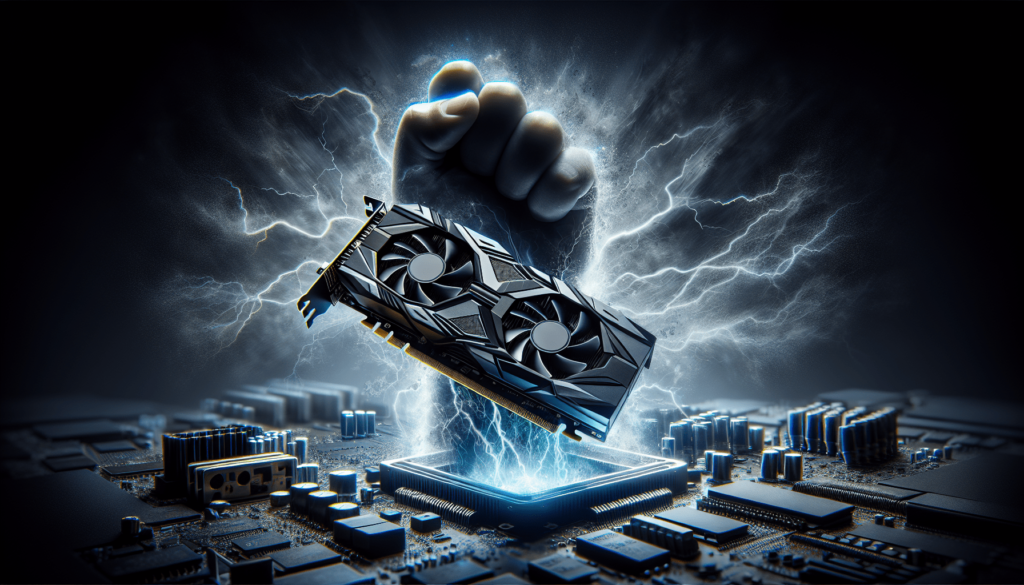
Optimizing Graphics Card Settings
Access Graphics Card Control Panel
To optimize your graphics card settings, you need to access its control panel or software interface. Many graphics card manufacturers provide specific software for managing graphics card settings, such as NVIDIA Control Panel or AMD Radeon Settings. Locate and open the appropriate control panel software on your computer. If you are unsure where to find it, consult the manufacturer’s website or the documentation that came with your graphics card. Once opened, you can explore various settings and customization options to align the graphics card’s performance with your preferences and specific needs.
Adjust Performance and Quality Settings
Within the graphics card control panel, you can adjust various performance and quality settings to fine-tune your gaming experience. Options like anti-aliasing, texture filtering, and shadow quality determine the visual quality of your games. Higher settings generally result in better image quality but may impact performance. Experiment with different settings to strike the right balance between visuals and performance. Additionally, depending on your graphics card model, you may have access to features like DirectX Raytracing, Virtual Reality (VR) support, or Multiscreen capabilities. Adjusting performance and quality settings allows you to optimize your graphics card for specific games or applications.
Enable Features and Enhancements
Graphics card control panels often provide access to exclusive features and enhancements designed to enhance your gaming experience. Explore the available options and enable features like V-Sync (Vertical Sync) to eliminate screen tearing, or G-Sync/Freesync for smoother gameplay. Some graphics cards offer additional technologies like NVIDIA DLSS (Deep Learning Super Sampling) or AMD FidelityFX, which leverage Artificial Intelligence or sharpening techniques to improve visuals. Keep an eye on firmware or software updates from the manufacturer, as they may introduce new features or optimizations that enhance your graphics card’s capabilities. Enabling features and enhancements allows you to make the most of your graphics card’s advanced technologies.
Overclocking and Fine-tuning
Understand Overclocking Risks and Benefits
Overclocking is the process of increasing the clock speed of your graphics card beyond its default settings to achieve higher performance. While overclocking can yield significant performance improvements, it also comes with increased risks. It can lead to higher temperatures, stability issues, and decreased component lifespan if not done properly. Before attempting to overclock your graphics card, thoroughly research the process and understand the risks involved. Make sure your cooling system is adequate, and keep in mind that overclocking may void warranties provided by the manufacturer. Additionally, follow reputable guides or consult experienced overclockers to maximize the benefits and minimize the risks.
Use Overclocking Software
To overclock your graphics card, you need to use specialized software provided by the graphics card manufacturer or reputable third-party tools. These software programs allow you to adjust clock speeds, fan speeds, and voltages to optimize performance. Before making any adjustments, familiarize yourself with the software’s interface and its capabilities. Start with conservative overclocking settings and gradually increase them, monitoring temperatures and stability along the way. Stress-testing the graphics card with the software can help identify any instability or overheating issues. Remember, the stability and longevity of your graphics card are paramount, so tread cautiously when overclocking.
Monitor Temperatures and Stability
During the overclocking process, monitoring temperatures and stability is crucial to ensure that your graphics card remains within safe operating limits. Excessive heat can damage components or lead to system instability. Use monitoring software, such as MSI Afterburner or GPU-Z, to track temperatures, fan speeds, and clock frequencies in real-time. Stress-test your overclocked graphics card using applications like FurMark or Unigine Heaven to validate its stability and avoid crashes during intensive tasks. Keep an eye on temperature spikes and ensure that your cooling system, including fans and heatsinks, can handle the increased heat generated by the overclock. Monitoring temperatures and stability helps maintain a healthy and reliable graphics card.
Maintenance and Care
Keep Graphics Card Clean from Dust
Over time, dust and debris can accumulate on the heatsink and cooling fans of your graphics card, hindering its ability to dissipate heat effectively. Regular maintenance is crucial to prevent overheating and performance degradation. Use compressed air or a small brush to gently remove dust from the heatsink and fans. Avoid using excessive force as it may damage delicate components. Performing this maintenance periodically, such as every few months, ensures optimal cooling performance and extends the lifespan of your graphics card. Clean and dust-free graphics cards provide better thermal efficiency, allowing for sustained high performance during intensive gaming sessions.
Monitor Temperatures Regularly
To maintain optimal performance and prevent long-term damage, it is important to monitor the temperatures of your graphics card on a regular basis. High temperatures can lead to decreased performance, stability issues, or even component failure. Utilize monitoring software to track the temperatures during gaming or other demanding tasks. Pay attention to the maximum temperature thresholds specified by the manufacturer and adjust your cooling system if necessary. Consider installing additional case fans or upgrading to a more advanced cooling solution like liquid cooling. Monitoring temperatures regularly safeguards your graphics card and keeps it running at its best under any workload.
Upgrade Other PC Components
While upgrading your graphics card can significantly impact your gaming experience, it is important to consider the overall balance of your PC components. A powerful graphics card may be limited by other components, such as the CPU or RAM. Assess your current system specifications and identify any potential bottlenecks. Upgrading the CPU, RAM, or storage devices can complement the performance of your new graphics card and unlock its full potential. Ensure compatibility between the upgraded components and research the optimal configurations for your specific needs. Upgrading other components keeps your gaming PC well-rounded and capable of tackling the latest games and applications.
Exploring Alternative Options
External Graphics Card Enclosures
If you own a laptop or a compact PC that lacks upgradeability, external graphics card enclosures provide a viable solution. These enclosures connect to your computer through a Thunderbolt or USB Type-C port and allow you to connect a graphics card externally. This setup enables considerable graphics performance improvements, making it ideal for gaming or resource-intensive tasks. When considering an external graphics card enclosure, ensure compatibility with your computer and check for any bandwidth limitations imposed by the connection interface. External graphics card enclosures offer flexibility and the ability to upgrade graphics performance on systems that were not initially designed for it.
Upgrading to a New PC
In some cases, upgrading your graphics card may not be sufficient to achieve the desired level of performance. If your current PC is outdated or lacks support for the latest technologies, it may be more practical to upgrade to a new system altogether. New PCs often come equipped with state-of-the-art components that offer significant performance improvements over older models. Consider the cost-effectiveness of upgrading individual components versus investing in a new PC, factoring in your specific requirements and budget. Upgrading to a new PC ensures that you have the latest technologies and a future-proof system capable of handling the demands of modern games and applications.
Using Cloud Gaming Services
Cloud gaming services have gained popularity in recent years, offering a different approach to enjoying high-quality gaming experiences. These services allow you to stream games over the internet rather than relying on the processing power of your own hardware. By subscribing to a cloud gaming service, you can access a vast library of games and play them on various devices, including low-end PCs, laptops, or even smartphones and tablets. Cloud gaming eliminates the need for a high-performance graphics card, as the processing is handled remotely in data centers. Consider cloud gaming services as an alternative if you prefer convenience, flexibility, and access to a wide range of games without the need for a dedicated gaming PC.
In conclusion, upgrading your graphics card can significantly enhance your gaming experience by providing improved performance, visuals, and compatibility. By following the steps outlined in this comprehensive guide, you can confidently navigate through the process of checking compatibility, researching graphics cards, preparing your PC, installing the new card, updating drivers and software, testing and troubleshooting, optimizing settings, overclocking, maintaining and caring for your graphics card, and exploring alternative options. Remember to prioritize safety, understand the risks involved, and make informed decisions based on your needs and budget. With a new graphics card, your gaming PC will be ready to tackle the latest games with power and efficiency. Happy gaming!

